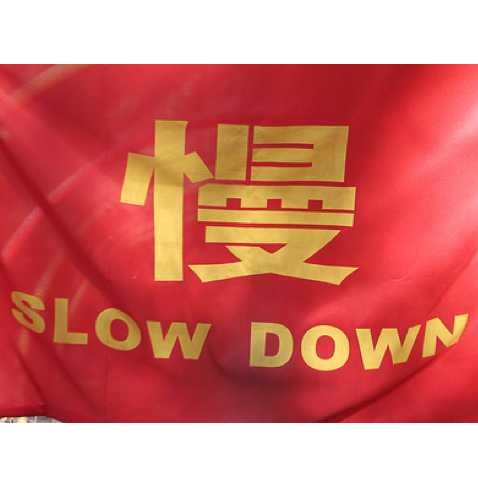
For some time now I have been warning that China will slow again before long. Signals are coming in thick and fast now that it’s underway. The trends in all major metrics are turning down, some even faster than I expected. Recurrent lending squeezes are now passe.
It is quite clear that the project of “rebalancing” described by Chinese officials is slowing the economy. Last year’s flush of optimism among market economists that the Plenum reforms would keep growth strong is based upon a false assumption that rising productivity growth will keep growth at 7% plus.
At base the rebalancing is this: interest rates have been held at artificially low levels to allow lots of uneconomic building activity to take place via forced lending to support urbanisation. Because Chinese households are high savers, that has suppressed consumption, further boosting the investment share of growth. If allowed to run much further, the middle income trap looms for China as the uneconomic debt chokes banks and productivity falls.
If you liberalise interest rates and allow them to rise, then more income will go to households and consumption can rise. As well, as markets assume control of credit mediation with a higher cost of and returns on capital, more loans go instead to productive enterprises and the nation moves up the value-chain. But the uneconomic loans that used to fund the big infrastructure and real estate build-out will no longer be possible. Old uneconomic loans will be shaken out.
This reform process is a colossal act of creative destruction and that being destroyed – fixed asset investment – is large enough that it will more than offset that being created elsewhere. The reform process will solidify the future of the Chinese economy, but it does so at the expense of slower growth.
The only question that matters is will the same officials that have mapped out this process have the gumption to pursue their own agenda? As growth slows, the temptation they will face is the same one that they gave into last year with a 2 trillion yuan stimulus, which is that more growth can be juiced by forcing more lending into more uneconomic fixed-asset investment projects. This is what bullish analysts mean when they hint that China will support growth through its transition.
But to do so is not supporting a change. It is curing the transition with the very poison it is designed to eliminate.
A different way to look at last year’s stimulus is that it was not so much a failure of gumption on the part of policy-makers as it was a delaying tactic by the new reform-minded regime of Xi Jinping as it consolidated power. Remember that many of the fiercest opponents of the reform process are in the elite levels of the Chinese communist party; elite interests that have benefited disproportionately through the old growth model will not want to see it change. It’s an oversimplification to say that the recent anti-corruption drive that has taken in very senior party members with links to Jiang Zemin is a part of neutering this oppostion. But it is still consistent with the supposition that the regime of President Xi Jinping is serious about bulldozing reform.
China’s centrally planned jig is up. It can take the pain now and get on with rebalancing or it can delay again and make the ultimate reckoning a debt crisis. In a Western democracy one could be confident that the latter course of poor policy would be pursued. In a communist state, with the power to carry better policy in the national interest, the cost/benefit analysis may have shifted towards early action. I can’t say that for certain. Nobody can. More stimulus is quite possible. But a determined reform process is a very credible scenario and if it does happen the consequences for Australia will be just as large an episode of creative destruction as that that will transpire in China. Not only will Chinese growth slow, its composition will shift away from commodity concentration.
Hedge it.

